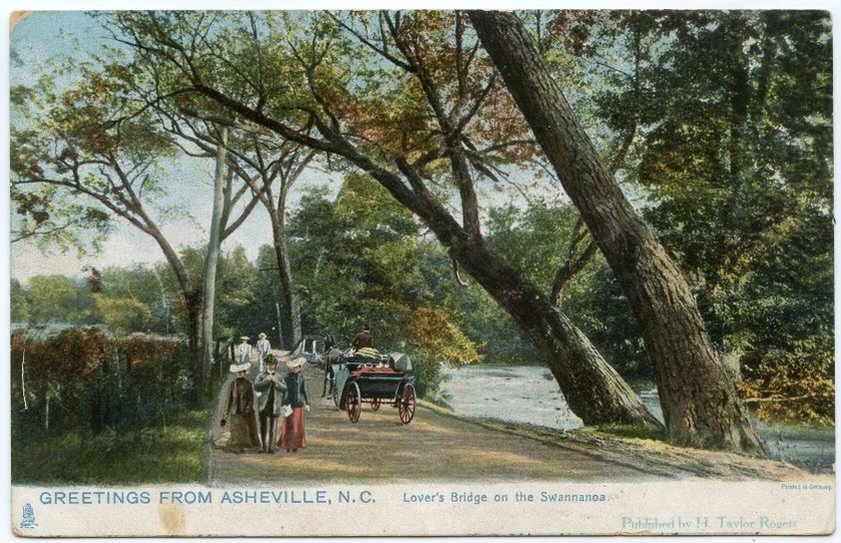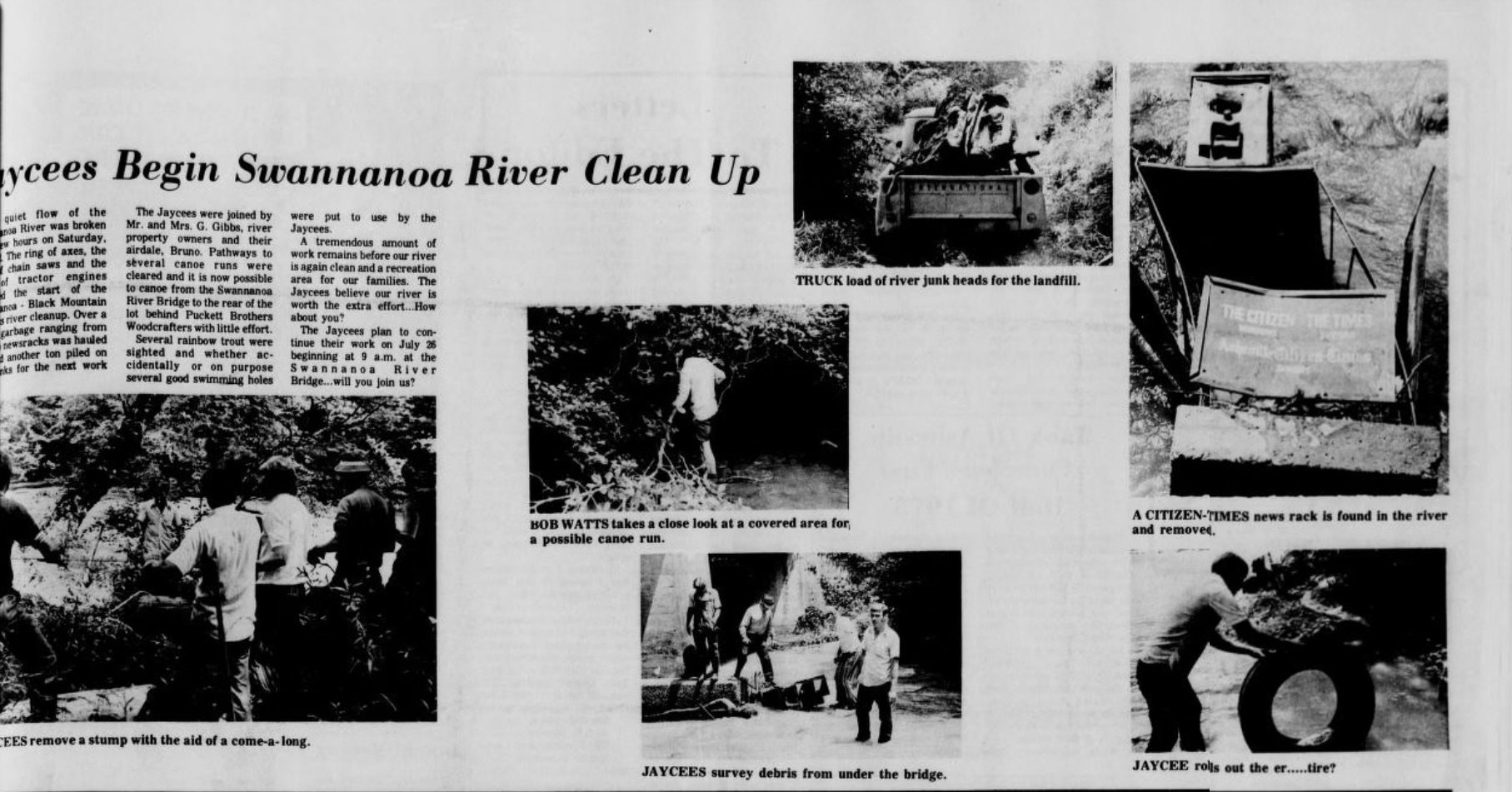Swannanoa River Restoration Faces Hurdles
A Look at the Swannanoa River Throughout History
Vivian Bryan & Cal Dooley| March 25, 2025
Photo of construction on the Swannanoa River bank.
Photo by Vivian Bryan
Restoration efforts on the beloved portion of the Swannanoa River running through the Warren Wilson College (WWC) campus are underway. Hurricane Helene left the banks of the river unrecognizably torn through and littered with debris, which is now being removed by contractors. This is the first step to restoring the river ecosystem, but some have concerns that the ecosystem is being neglected in the operation. The river has long been an important part of the school’s culture, and conservationists at WWC are setting a different course for restoration.
While the Army Corps of Engineers oversees the project, the work is being done by various subcontractors from across the country by the national AshBritt company.
WWC Dean of Lands Dave Ellum says that contractors on portions of the Swannanoa outside of WWC lands are stripping the land of everything possible and grading the soil to an unnatural slope. Ellum has worked closely with the contractors to ensure that the portion of the Swannanoa running through WWC’s campus does not face the same carelessness. This includes three considerations: no cutting live trees, no reshaping the land and removing minimal organic debris. The three considerations that WWC proposed included no removal of living trees, no reshaping of the natural land and limiting the amount of organic debris removed in the area.
“At the end of this process, if you see an overhead map of the Swananoa River, I think you're going to see the typical, and then you're going to get to Warren Wilson College and it'll look very different,” Ellum said.
One motivation for removing maximum debris is the risk of damage to bridges if there is another flood. However, profit could be another motive in the heavy-handed removal.
“Their objective is to take everything they possibly can,” Ellum said. “What happens when they get to the dump [is] they weigh it, and they get a certain amount of money… It might be a good business model for the business, it's not a great business model for the ecosystem.”
Between the lack of vegetation left over by floods and the debris removal operation, there is a serious risk of soil erosion. To prevent this from happening, along with leaving the land unchanged, WWC students on the Forestry Crew have planted thousands of live stakes along the river banks. Live stakes are cuttings taken from dormant trees or shrubs and planted directly into the soil, which will provide native species a head start against invasives, guard against erosion and regulate stream temperature.
The time of the season when live stakes can be cut is ending in the next few weeks, but until then, there is an all-out push to get as many in the ground as possible. Many other locations along the river lack the funding and attention needed to initiate live staking, so WWC environmental scientists and land crews are hoping to expand their work together to other areas along the river.
As a work college, WWC has an advantage in the restoration efforts that other areas do not have. Along with the Forestry Crew, environmental science professors and student researchers have stepped in to revitalize the ecosystem. Patrick Ciccotto, a professor specializing in the study of freshwater fish, has already begun leading classes in surveying biodiversity in the river. The river has historically been one of the college’s most important sites for environmental education and research. In the wake of Helene, educators are using that relationship to shift the focus onto resilience in the face of climate change.
“From the view of the scientific literature, there isn't very much studied about the impacts of major storms like this in the southern Appalachian regions,” Ciccotto said. “But it does provide an opportunity for us to be on the forefront of studying these impacts that hopefully can allow us to develop some future strategies to prevent something like this from having such a major impact.”
While there is no clear timeline yet when the river will be safe for recreational use, the school does plan to restore the river trail once debris removal is complete. For now, the school’s attention is focused on stewarding the ecosystem. Until then, students and community members are feeling the temporary loss of a major campus resource that has held sentimental value for generations. While there is no clear timeline for when the river will be safe for recreational use again, the school intends to restore the river trail once debris removal efforts are complete. For now, WWC’s top priority is to focus on stewarding the ecosystem. Though the impact on the river has evoked grief amongst community members, a communal space that has been cherished in the community for generations, WWC’s restoration efforts will preserve the integrity of the river and allow it to flourish once again in the years to come.






















